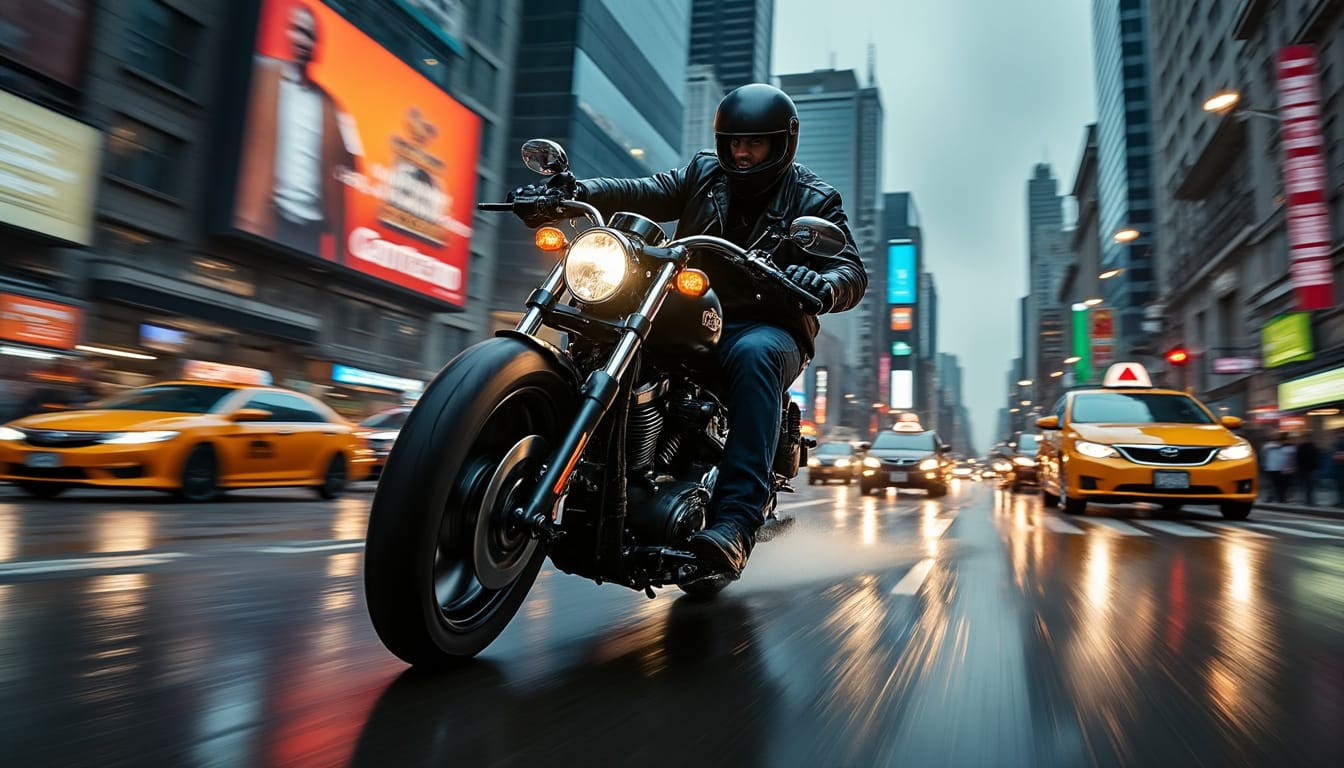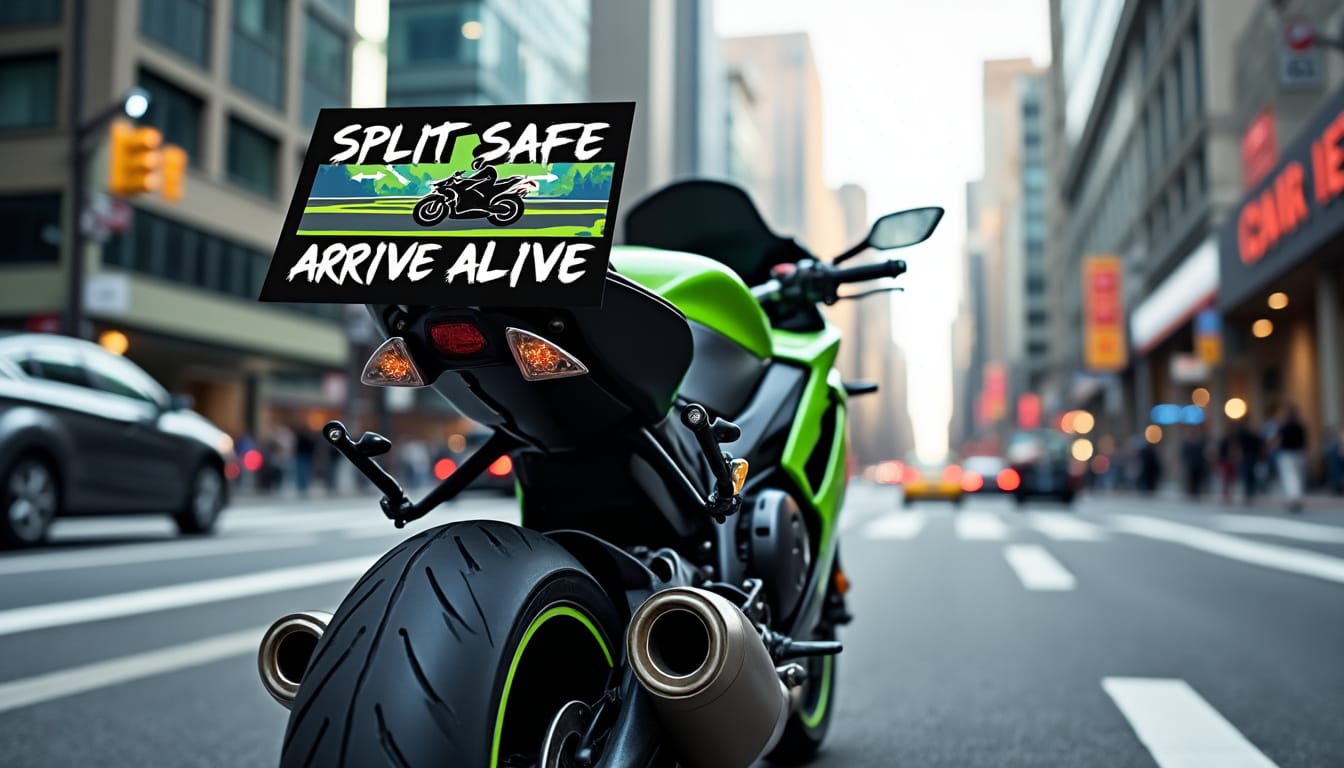Upcoming changes in 2025: new regulations on lane splitting for motorcycles

Starting in January 2025, the regulations on lane splitting for motorcycles in France will undergo major changes. This legislative change promises to provide a more structured and secure framework for motorcyclists, but also for motorists. A practice that has long been tolerated without a real legal basis will be officially recognized and strictly regulated. Therefore, it is essential to prepare for the new conditions that will be implemented, which aim to streamline traffic while ensuring the safety of all on the road.
Two-wheeled drivers must familiarize themselves with these new rules to be compliant and ride with confidence. This article examines the various aspects of this new regulation, as well as the reasons behind this legal framework.
Lane Splitting: A Practice Finally Regulated
Lane splitting refers to the ability of motorcyclists to ride between lanes of cars, especially when they are stopped or moving slowly. Although this practice is common in France, it has previously lacked a clear legislative framework. Many users shared the roads without truly knowing what rules applied. This legal gray area has often led to tensions between motorcyclists and motorists, not to mention the accident risks that ensued.
As of 2025, the situation will radically change. The new legal framework will officially recognize lane splitting, legalizing it on certain routes that will meet strict criteria. This advancement will mark a turning point in the history of two-wheeler mobility in France.

Circulation Conditions and Relevant Routes
With the legalization of lane splitting, it will be crucial to adhere to a number of rules. The first of these concerns the authorized routes. Motorcyclists will only be able to ride between lanes on roads with two lanes in each direction, separated by a central median. These roads must also display a speed limit of at least 70 km/h.
A notable exception is the Paris beltway, which, although limited to 50 km/h, will also be an authorized route by exemption. By adding a certain flexibility to this rule, the authorities aim to take into account the specificities of traffic conditions in the capital.
The Conditions to Be Met
In addition to restrictions on routes, motorcyclists will also have to observe specific guidelines regarding their behavior on the road. It will be imperative to position themselves between the two leftmost lanes when practicing lane splitting. As for speed, it is strictly limited to 50 km/h in traffic situations. In case of congestion where cars are completely stopped, this limit drops to 30 km/h. These measures aim to prioritize the safety of users and reduce risky behaviors.
Adherence to these guidelines will be essential to ensure not only the integrity of motorcyclists but also that of other road users.
Sanctions for Non-Compliance with the Regulation
Alongside the regulation of lane splitting, it is important to mention that sanctions will be put in place to deter violations. The Highway Code has provided strict measures for those who do not follow the new rules. In the event of an infringement, motorcyclists face a fourth-class fine, which amounts to a penalty of 135 euros. Additionally, a withdrawal of three points from the driving license may also be applied.
The detection of these infractions will be strengthened, and law enforcement will pay particular attention to the enforcement of this regulation on the authorized routes. The objective is to ensure user safety and prevent risky behaviors that could ensue.

Importance of Compliance with the Rules
The established rules are not merely a legal framework; they represent a commitment to a safer cohabitation between different road users. By adhering to these guidelines, motorcyclists contribute to better traffic flow while reducing potential accident risks. It is therefore crucial to be informed and to raise awareness among two-wheeled drivers about these new legislations. Awareness-raising is a fundamental aspect of the transition to legal lane splitting.
Adopting responsible and rule-compliant driving is essential to ensure the safety of all. The new regulation also aims to enhance the feeling of safety for motorcyclists by providing them with a normative framework for riding between lanes.
Why This Rule? The Goals and Issues for 2025
The implementation of lane splitting aims at several essential objectives. First and foremost, the main goal is to streamline traffic. During traffic jams, allowing two-wheelers to move between lanes directly helps alleviate congestion and reduces travel time for all users, especially for motorists who experience improved traffic flow.
Moreover, this regulation aims to enhance road safety. By regulating this practice, the goal is to minimize risky behaviors, both for motorcyclists and motorists. Far from being a mere freedom, this measure enforces them to comply with specific rules, so that the risks of accidents are significantly reduced.
Clarifying Practices
The legalization and regulation of lane splitting help to move out of the gray area that surrounds this practice. Previously, motorcyclists often operated under a legal fog, leading to tensions among users. This new regulation aims to clarify practices, facilitating a better understanding of the rules to follow for everyone. By specifying the limits and conditions for using lane splitting, the state seeks to create a shared space where every user knows what to expect.
The changes in regulation should not be perceived as a constraint, but rather as a step forward towards a more harmonious and respectful traffic that ensures everyone's safety.

A Successful Experimentation
This measure, resulting from the findings of an experimentation conducted over several years, reflects a desire to adapt the Highway Code to the reality of users. The experimentation has allowed for the identification of best practices, analysis of impacts on road safety, and the proposal of convincing amendments for the regulation. These results led to the decision to establish clear rules, thus acknowledging the importance of evolving motorcyclist behavior in the face of increasingly dense traffic.
This pragmatic approach aims to adapt legislation to the new dynamics of urban traffic and promote a circulation framework that is both secure and efficient for all.
Leave a Reply



Articles relatifs